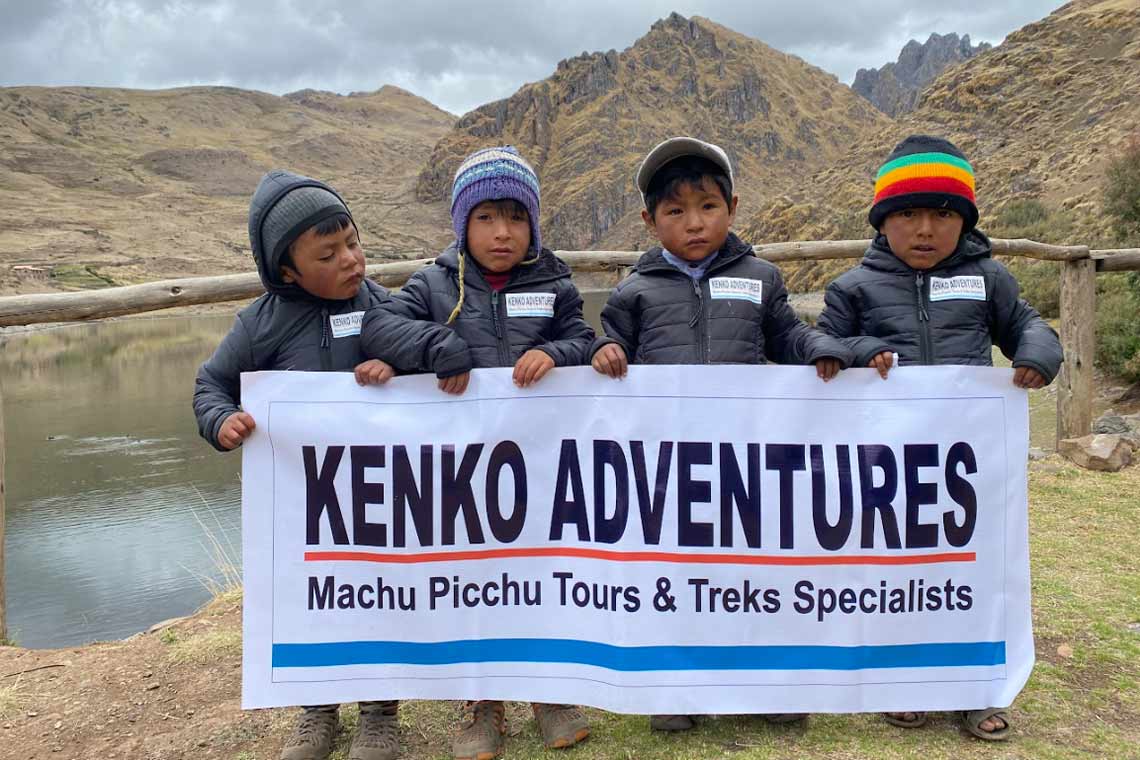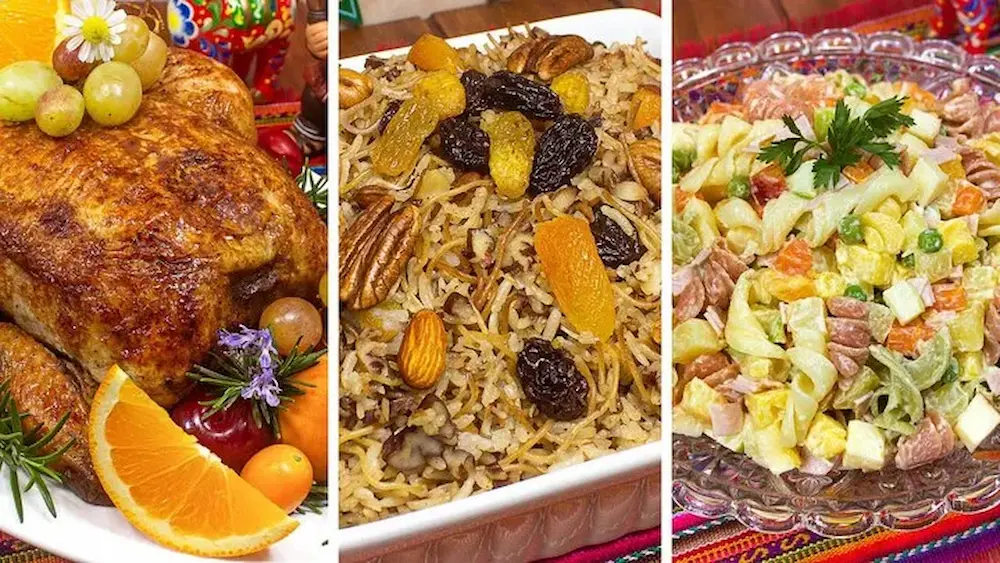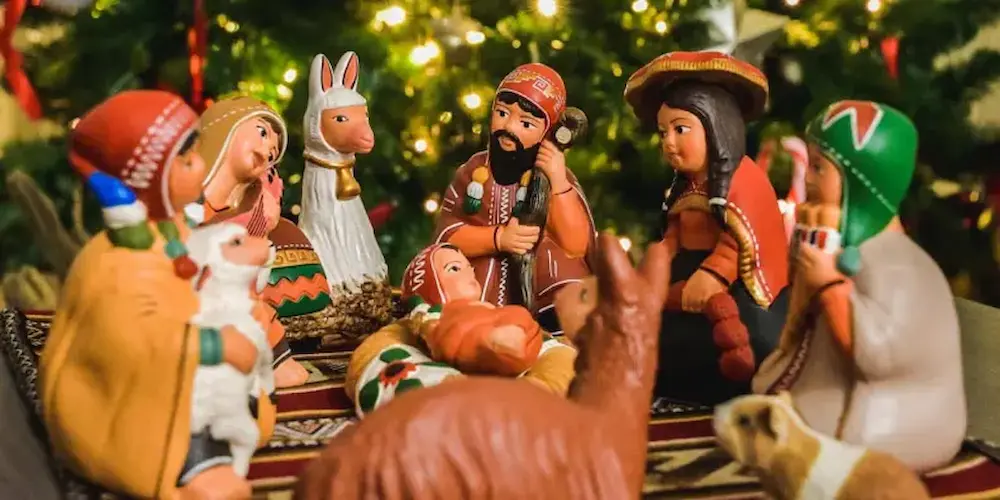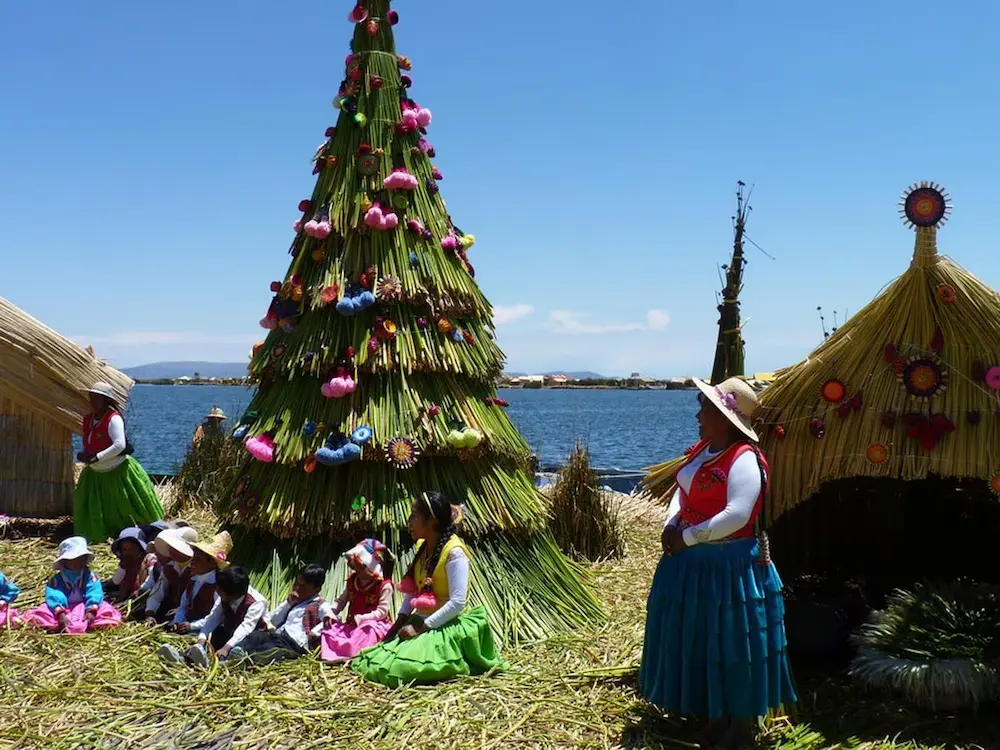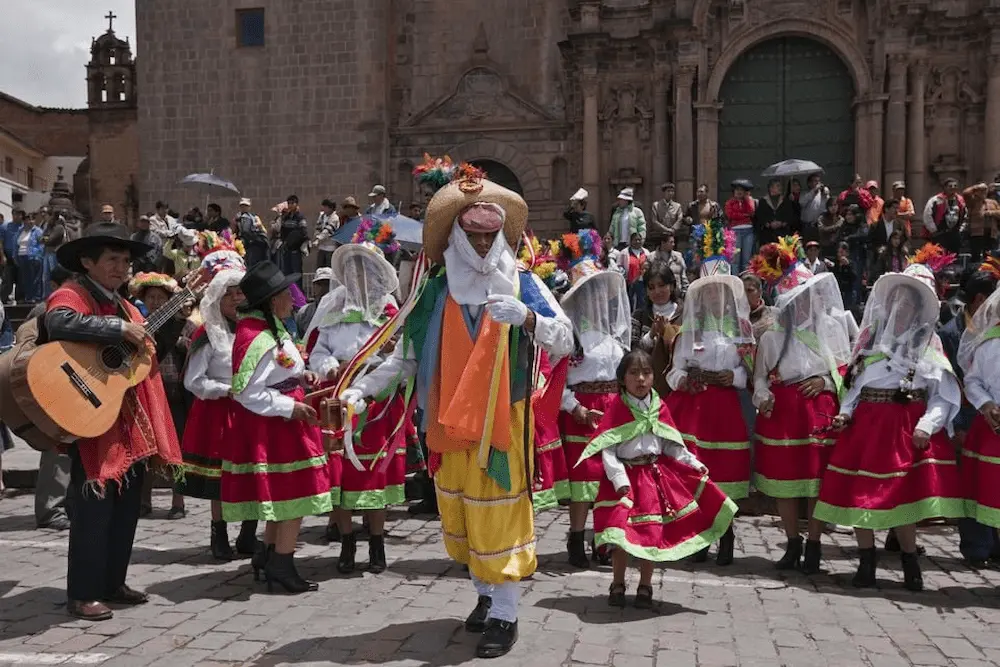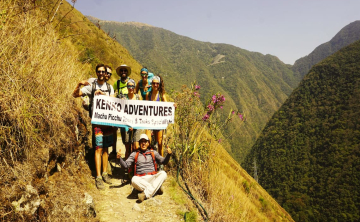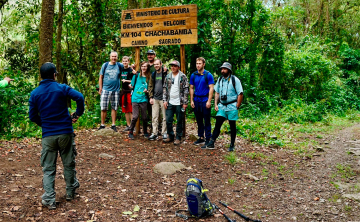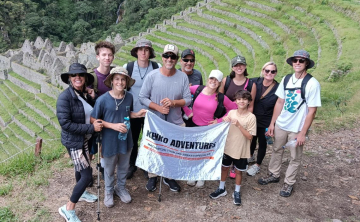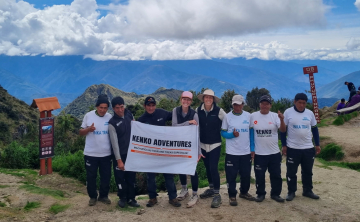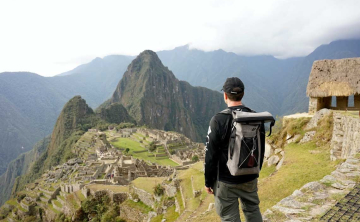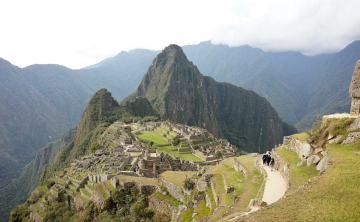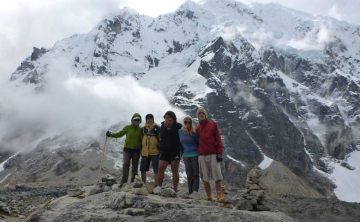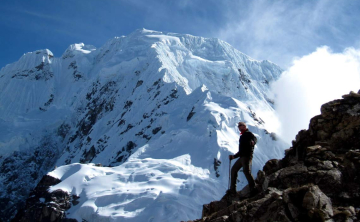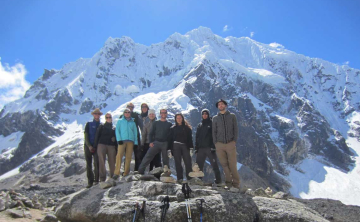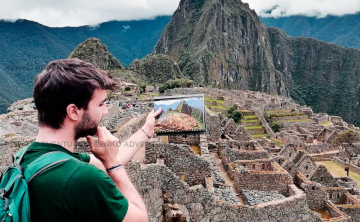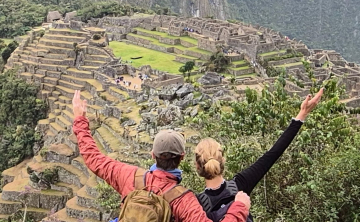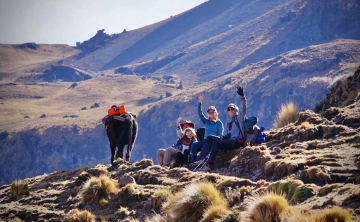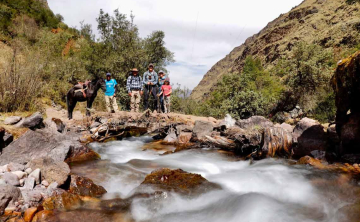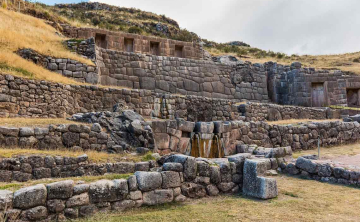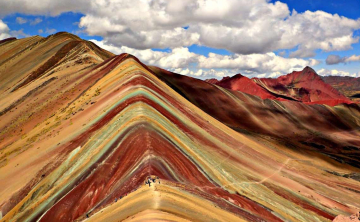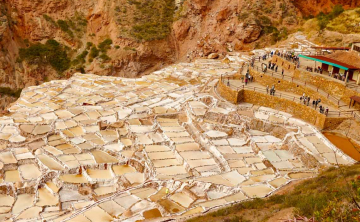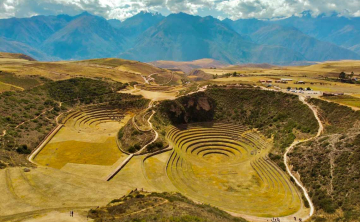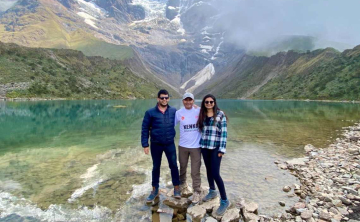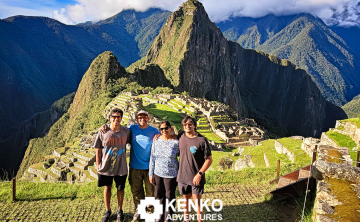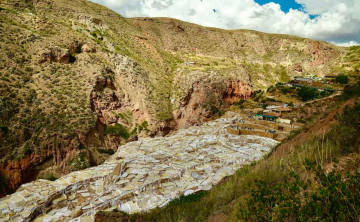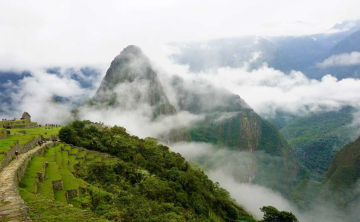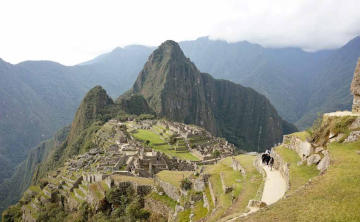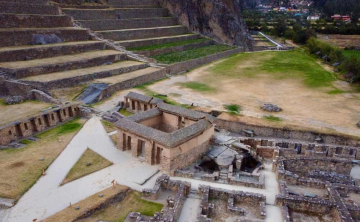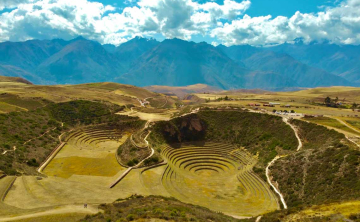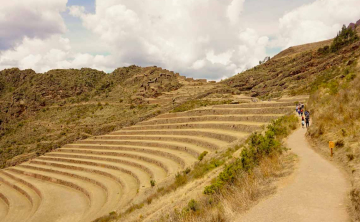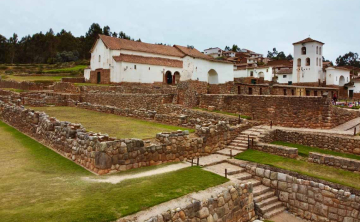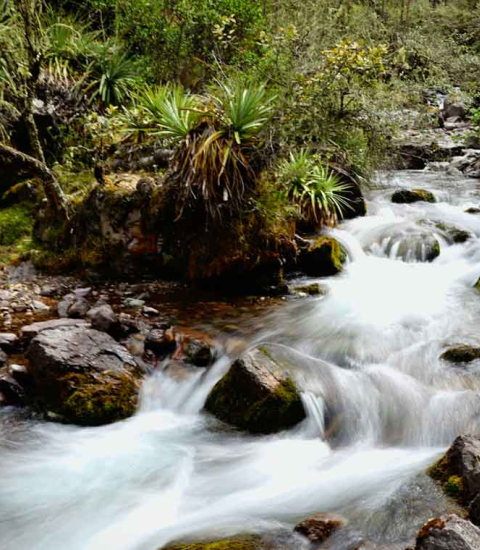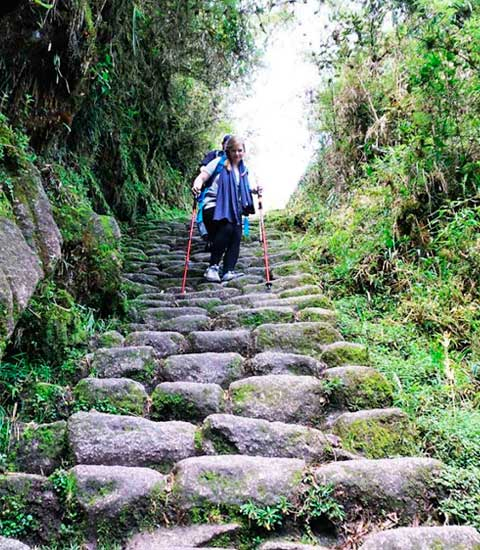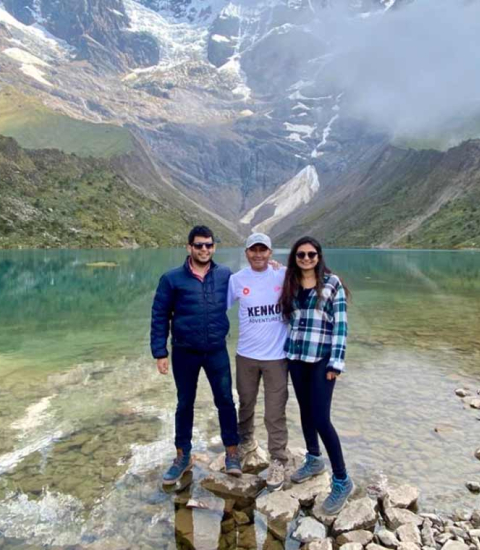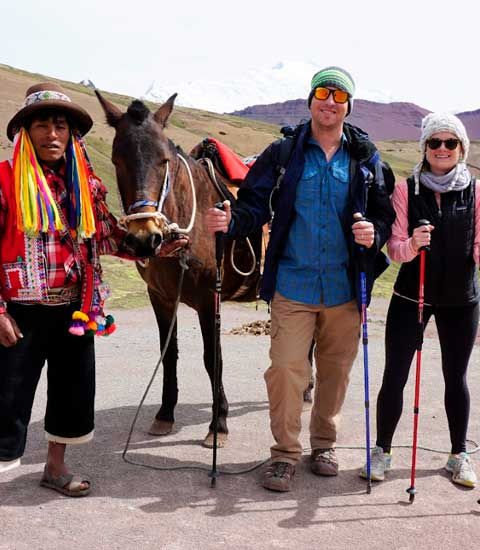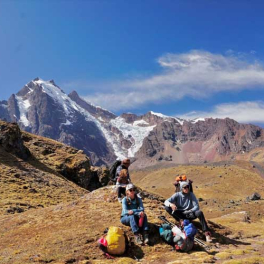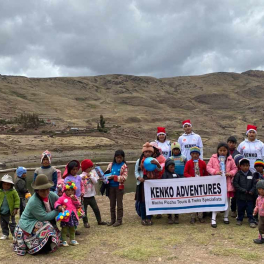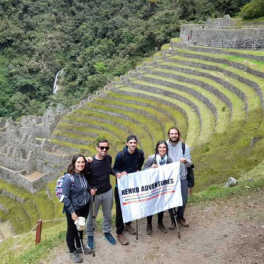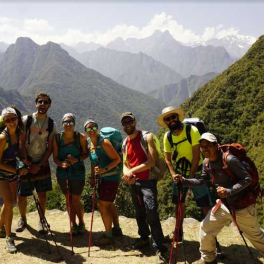We present our real culture life to our clients, hiring people from villages and communities of our region.
- Blog
- Christmas Traditions In Peru
Christmas traditions in Peru
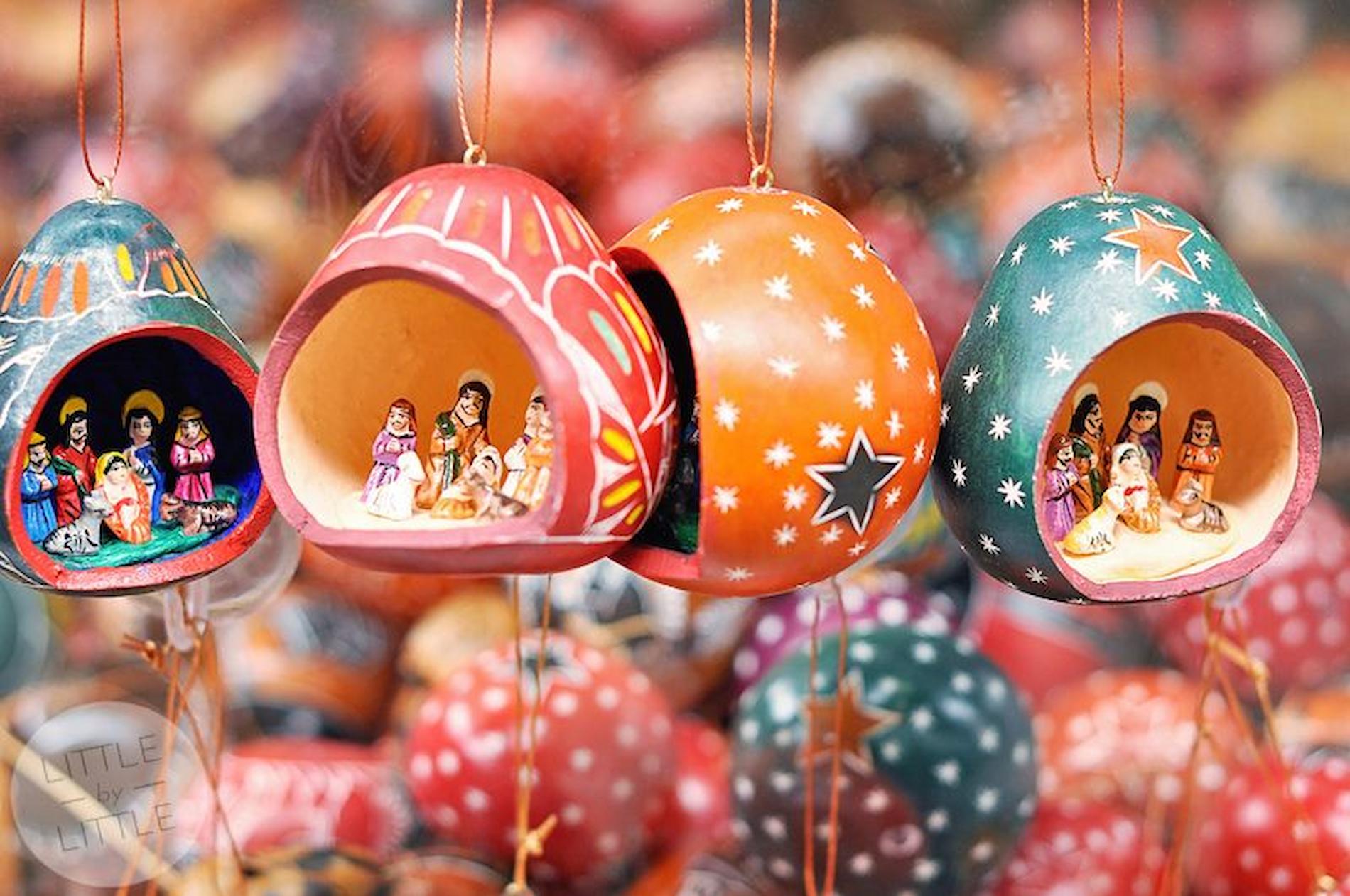
Christmas traditions in Peru customs are very unique. Every December, the entire nation is transformed into a living mosaic of devotion, lights, and scents that is unmatched throughout the year. It seems like a bygone era, filled with customs that our parents and grandparents instilled in us and that we now celebrate annually as a community.
The manner that Peruvian celebrations blend the joyous and the religious is what makes them special. While families embrace and fireworks light up the sky outside, colonial churches are filled with candles and melodies for midnight masses. Families begin celebrating on Christmas Eve, staying up past midnight to share dinner, gifts, and the love of being together. In the nacimientos, the sheep are swapped out for llamas and alpacas, and the tables are laden with both roasted turkey and pachamanca prepared underground.
The primary customs of Peru will be discussed in this article, along with its most emblematic celebrations, folk dances, religious ceremonies, and the finest of its traditional cuisine. An invitation to discover the ways that cuisine, family, and faith come together to create one of the most heartfelt, genuine, and loving festivities in Latin America.
How is Christmas celebrated in Peru?
Christmas in Peru is largely centered on Christmas Eve, known locally as Nochebuena. On December 24 th, families gather in the evening for a big dinner, attend the midnight mass (the Misa de Gallo or Rooster’s Mass) and then continue the celebration until after midnight.
Because December is summertime on the Peruvian coast, these celebrations also blend outdoor elements, fireworks and extended family time in a warm environment — quite different from the snowy winter Christmases of the Northern Hemisphere.
Moreover, regional and cultural influences play a strong role in how Christmas is celebrated. In the Andean highlands, for instance, the traditions incorporate indigenous practices, Andean instruments and symbolic landscapes in the nativity scene.
Key Christmas traditions in Peru
Christmas in Peru is celebrated with a rich blend of religious ceremonies, family gatherings, and vibrant cultural customs that have been passed down through generations. These key Christmas traditions in Peru reflect the country’s unique history and regional diversity, making the holiday season a deeply meaningful and joyful time for communities across the nation.
From festive midnight masses and beautifully crafted nativity scenes to traditional foods and lively markets, these customs not only bring families together but also showcase Peru’s strong sense of identity and communal spirit during Christmas. Understanding these traditions offers valuable insight into how Peruvians embrace the holiday with warmth, faith, and celebration.
Midnight mass
The Misa de Gallo or Rooster’s Mass is a central religious service held on Christmas Eve. Many families attend the service around 10 pm or later, then return home for the main celebration and dinner.
What makes it uniquely Peruvian is how local traditions are woven into the mass: Andean instruments, communal singing, and a heightened sense of ritual mark the evening. This underscores how Christmas in Peru blends faith with cultural identity.
Nativity scenes in Peruvian homes
In Peru, nacimientos or nativity scenes hold a very special place in Christmas decorations. In places like Cusco, families build elaborate scenes with Andean motifs, local animals such as llamas, alpacas, and landscapes that reflect their region.
These nativity scenes are often completed or revealed around midnight on Christmas Eve and bring together the community’s craftsmanship, storytelling and tradition.
Gift‑giving and Christmas dinner
Unlike some countries where gifts are exchanged in the morning, in Peru the tradition of gift‑giving usually happens after the midnight celebration. Families share dinner, then time of exchange and celebration with friends and relatives.
The dinner itself becomes a festive moment filled with food, drink, laughter and a sense of thankfulness—a central part of the Peruvian Christmas experience.
Chocolatadas and community gatherings
Another hallmark of Christmas traditions in Peru is the chocolatada — a community gathering where hot chocolate and traditional sweets are shared, often in churches or by charitable organizations.
These events emphasize generosity and social connection: they ensure that even communities with fewer resources can participate in the holiday spirit.
Fireworks and celebrations at midnight
When midnight strikes on Christmas Eve, many Peruvian towns and cities light up with fireworks, music and communal celebration.
This festive moment not only marks the end of the religious service or dinner but becomes a communal symbol of joy, renewal and shared tradition.
You might also want to check out: What were the incas known for?
Typical Christmas foods in Peru
Christmas in Peru is as much about flavor as it is about tradition. The holiday table is filled with a variety of dishes that reflect the country’s rich cultural diversity and regional influences. From roast turkey to sweet breads and Amazonian specialties, these foods are an essential part of how Peruvians celebrate the season.
Roast turkey and regional variations
One of the most common Christmas dishes in urban Peru is roast turkey, often served with stuffing, salads, rice, and sauces. While turkey (pavo) is considered a modern staple in the Peruvian Christmas table, it's typically seasoned with a local twist — featuring ingredients like cumin, garlic, Peruvian ajà peppers, or soy sauce. Some families opt to bake it in a clay oven or marinate it for 24 hours in local spices to give it a distinctly Peruvian flavor. It is usually accompanied by sides like ensalada rusa (beet and potato salad), applesauce, and sometimes even arroz árabe (Arab-style rice with raisins and nuts).
However, Christmas dinner in Peru isn’t limited to just turkey. In the Andean highlands and Amazon regions, traditional proteins such as lechón (roast pork), pollo al horno (baked chicken), trucha (trout), or even cuy chactado (fried guinea pig) may take center stage. These variations reflect how Christmas traditions in Peru are heavily influenced by geography and regional culinary customs. In rural communities, meals often rely on locally sourced ingredients and traditional cooking methods, making each Christmas celebration a reflection of local identity and culture.
Panetón and hot chocolate
No Peruvian Christmas is complete without panetón, a sweet bread with dried fruits and citrus zest that originated in Italy but has become a national holiday favorite. Families often enjoy slices of panetón with thick, rich hot chocolate — made from pure Peruvian cacao, cinnamon, cloves, and sometimes condensed milk. This combination is typically served after dinner, often around midnight or even during afternoon gatherings in the days leading up to Christmas. The shared act of breaking bread and sipping chocolate warms both the body and spirit, especially in the colder mountain areas.
This tradition also plays an important role in community gatherings like the chocolatada, where panetón and hot chocolate are distributed to children and families in need. Supermarkets and bakeries across Peru stock massive amounts of panetón during the holiday season, and families often buy multiple loaves to gift or donate. Whether enjoyed at home or shared in a public event, this duo is more than just a treat — it’s a comforting symbol of unity and generosity that defines Christmas traditions in Peru.
Regional dishes from the Andes and Amazon
In addition to turkey and panetón, many Peruvian families prepare regional dishes that reflect their cultural roots and culinary heritage. In the Andes, for example, tamales made from corn dough and filled with meat or cheese are a popular Christmas food. These are often steamed in banana or corn leaves and accompanied by spicy ajà sauces. Arroz árabe, a fusion dish with Middle Eastern influence, made with raisins, almonds, and spices, is another holiday favorite, especially in Lima and coastal areas. In Quechua and Aymara communities, Christmas meals may include potatoes, oca, or chuño, reflecting traditional Andean agriculture.
In the Amazon region, Christmas foods showcase the abundance of the rainforest. Dishes often include grilled river fish like paiche or sábalo, plantain-based sides, and tropical fruits such as mangoes and papayas. Meals tend to be more communal and open-air due to the warm climate. Regardless of location, Christmas traditions in Peru celebrate food not only as nourishment but as a cultural experience — a time for families to come together, share ancestral recipes, and celebrate identity through taste. These rich culinary practices make Peruvian Christmas feasts as diverse and flavorful as the country itself.
You might also want to check out: Celebration of day of the dead in Peru
Christmas traditions in Peru for children
Children are at the heart of many Christmas traditions in Peru. From helping set up nativity scenes to participating in midnight festivities and community events, the holiday season becomes a magical experience for the youngest family members. These traditions not only create joyful memories but also serve to pass down cultural values and community spirit to future generations.
Activities during Christmas Eve
In Peru, Christmas Eve (Nochebuena) is the most anticipated part of the celebration, and children play a central role. Many families involve their kids in decorating the house, preparing food, and placing baby Jesus in the nativity scene at exactly midnight. Children often stay up later than usual, dressed in festive clothes, singing carols or watching fireworks. The excitement builds throughout the evening, culminating in a family dinner, gift-giving, and joyful celebration that extends well into the night.
These late-night traditions create strong emotional connections between children and the holiday. Unlike in other countries where Christmas morning is the focus, Peruvian children associate the joy of Christmas with nighttime magic — candlelight, music, family, and community. It’s a time when they are seen, included, and cherished, making it one of the most memorable times of the year. This experience is a key part of how Christmas traditions in Peru foster strong family bonds and intergenerational celebration.
Toy donations and community Christmas events
Beyond family celebrations, Peru places a strong emphasis on community involvement and social responsibility during the holidays. A standout tradition is the chocolatada — a public event where hot chocolate, panetón, and small gifts are distributed to children, especially in low-income neighborhoods or rural areas. These events are often organized by churches, schools, or local governments, and sometimes supported by private donations or volunteers.
Children eagerly attend chocolatadas not just for the treats, but for the games, music, and shared joy. These events help ensure that all children, regardless of background, get to experience the warmth of the holiday season. They also teach values like generosity, compassion, and the importance of community support. As such, these acts of kindness are essential to Christmas traditions in Peru, reflecting the nation’s strong sense of solidarity during the holidays.
Santa Claus? Or the Child Jesus?
While global commercialization has introduced Santa Claus (Papá Noel) to Peruvian culture, many families still hold onto more traditional gift-bringing figures like the Niño Jesús (Baby Jesus) or the Reyes Magos (Three Wise Men). In homes where religious customs are strong, it's common for children to place their shoes near the nativity scene and wait for the Christ Child to leave gifts after midnight mass.
This dual tradition highlights Peru’s blend of modern and historic beliefs. In urban areas, children may write letters to Santa and take photos with him at shopping malls, while still maintaining the spiritual connection with the nativity and the birth of Jesus. These layered customs allow families to choose what resonates most with their values and beliefs, making Christmas traditions in Peru deeply personal and reflective of both faith and changing cultural influences.
You might also want to check out: 20 fascinating facts about Inca Culture
How the Christmas traditions in Peru differ from other countries
Christmas traditions around the world share some common themes, but Peru’s celebrations stand out due to their unique blend of climate, culture, and history. Understanding these differences not only enriches your appreciation of Peru’s holiday customs but also highlights the country’s distinctive approach to Christmas, shaped by geography and indigenous heritage.
Comparison with US and European traditions
Unlike the snowy, wintery Christmas scenes typical in many parts of the US and Europe, Peru’s Christmas occurs during the Southern Hemisphere’s summer season—especially along the coast—resulting in warm weather and outdoor festivities. Instead of waking up to open presents on Christmas morning, many Peruvians focus on a festive midnight celebration (Misa de Gallo), featuring nativity scenes, family feasts, and fireworks. Gift-giving tends to happen after the midnight mass or during the evening, emphasizing the communal spirit rather than the morning rush.
In addition, commercialized Christmas symbols like large decorated trees, extensive holiday lights, and Santa Claus are present but less dominant than in Western countries. Peruvian homes and public spaces often showcase handcrafted nativity scenes (nacimientos), reflecting the country’s strong Catholic roots. These intimate, handmade displays emphasize religious devotion and community participation, contrasting with the more commercial and mass-produced decorations common in the US and Europe.
Unique features of Peru’s Christmas culture
One of the most remarkable traditions unique to Peru is the Santurantikuy market in Cusco, held every December 24th. This bustling marketplace offers a wide variety of handcrafted nativity figurines, Christmas decorations, and artisanal gifts, making it a cultural hub that attracts locals and tourists alike. Beyond this, Peruvian Christmas celebrations incorporate vibrant indigenous dances and performances such as the Hatajo de Negritos along the coast, which blend pre-Hispanic customs with Christian symbolism.
Moreover, Christmas in Peru integrates many indigenous elements into its religious ceremonies, creating a rich tapestry of spiritual and cultural expression. From traditional Andean music accompanying midnight masses to communal outdoor meals in the Amazon, these distinctive practices showcase how Christmas traditions in Peru honor both ancestral heritage and Catholic faith, setting them apart from celebrations in other countries.
You might also want to check out: Inca calendar: Solar alignments at Machu Picchu
Tips to experience Christmas traditions in Peru like a local
Experiencing Christmas in Peru offers a unique opportunity to immerse yourself in a vibrant blend of culture, faith, and community spirit. Whether you’re a traveler or simply curious about Peruvian customs, understanding local traditions and etiquette can help you connect more deeply and enjoy authentic celebrations that go beyond the usual tourist experience.
What to do if you visit Peru at Christmas
If you plan to visit Peru during the holiday season, it’s important to book accommodations and transportation early, as popular destinations like Cusco, Lima, and Puno fill up quickly due to increased tourist traffic and local festivities. Participating in a midnight mass (Misa de Gallo) is highly recommended; these services are central to Christmas Eve celebrations and offer a glimpse into the religious heart of Peruvian culture.
Don’t miss visiting local nativity scenes, called nacimientos, which range from small family displays to elaborate public installations. Trying traditional foods such as panetón with hot chocolate is a must, as is attending community events like chocolatadas or the Santurantikuy market in Cusco. Be prepared for lively celebrations that often extend late into the night, blending family time, food, music, and fireworks in a joyous atmosphere.
Where to enjoy the best festivities
Cusco is a top destination to experience authentic Christmas traditions in Peru, especially the Santurantikuy market held every December 24th in the Plaza de Armas. This vibrant marketplace offers handmade nativity figurines, festive decorations, and a lively atmosphere rich with cultural significance. Lima’s neighborhoods such as Miraflores and Barranco also host beautiful light displays, public concerts, and family-friendly events.
For those seeking a more traditional and less commercialized experience, the Andes and Amazon regions provide intimate celebrations rooted in local customs. Here, you can witness indigenous dances, communal feasts, and religious ceremonies that offer a deeper connection to Peru’s cultural heritage. Choosing your destination wisely can greatly enhance your understanding of Christmas traditions in Peru.
Cultural and etiquette recommendations
When attending Christmas events or family gatherings in Peru, it’s important to respect local religious customs and dress modestly, especially if participating in church services. Arriving on time for midnight mass is appreciated, though keep in mind that many social celebrations, including dinners, often start later in the evening around 9 or 10 pm.
If invited to a family home, bringing a gift such as panetón or a bottle of wine is a thoughtful gesture. Engaging sincerely with hosts and community members by asking about traditions or attempting a few words in Spanish or Quechua can open doors to richer experiences. Showing respect and curiosity about local practices helps you connect meaningfully and enjoy the warmth of Peruvian hospitality during the holidays.
A Christmas unlike any other, full of identity and tradition
The Christmas traditions in Peru are far more than seasonal customs — they reflect centuries of cultural blending, regional diversity and communal joy. From midnight mass and fireworks to panetón, hot chocolate and handcrafted nativity scenes, every element of the celebration carries meaning.
Celebrating Christmas in Peru means embracing warmth (both literal and metaphorical), gathering with loved ones, sharing meals and giving not just gifts but time, community and attention. Whether you visit or join in from afar, you’ll discover why this festive season holds a unique place in the hearts of Peruvians.
Why Kenko Adventures?
We offer unique services like: hot shower and private toilets on treks. We have a real responsibility taking care of our planet.
Experts on: Inca Trail hikes and Machu Picchu Hiking Tours. We operate small groups.
Superior Quality services and full flexibility for any changes in this pandemic
Free warm jacket for my litle friend!
Kenko Adventure Peru founder decided to add a social proyect in all Our tours that means, if you are booking a tour with Us, you automatically are donating a warm jacket for Our litle kids that have very hard living in very cold conditions near by the Andes Mountain
